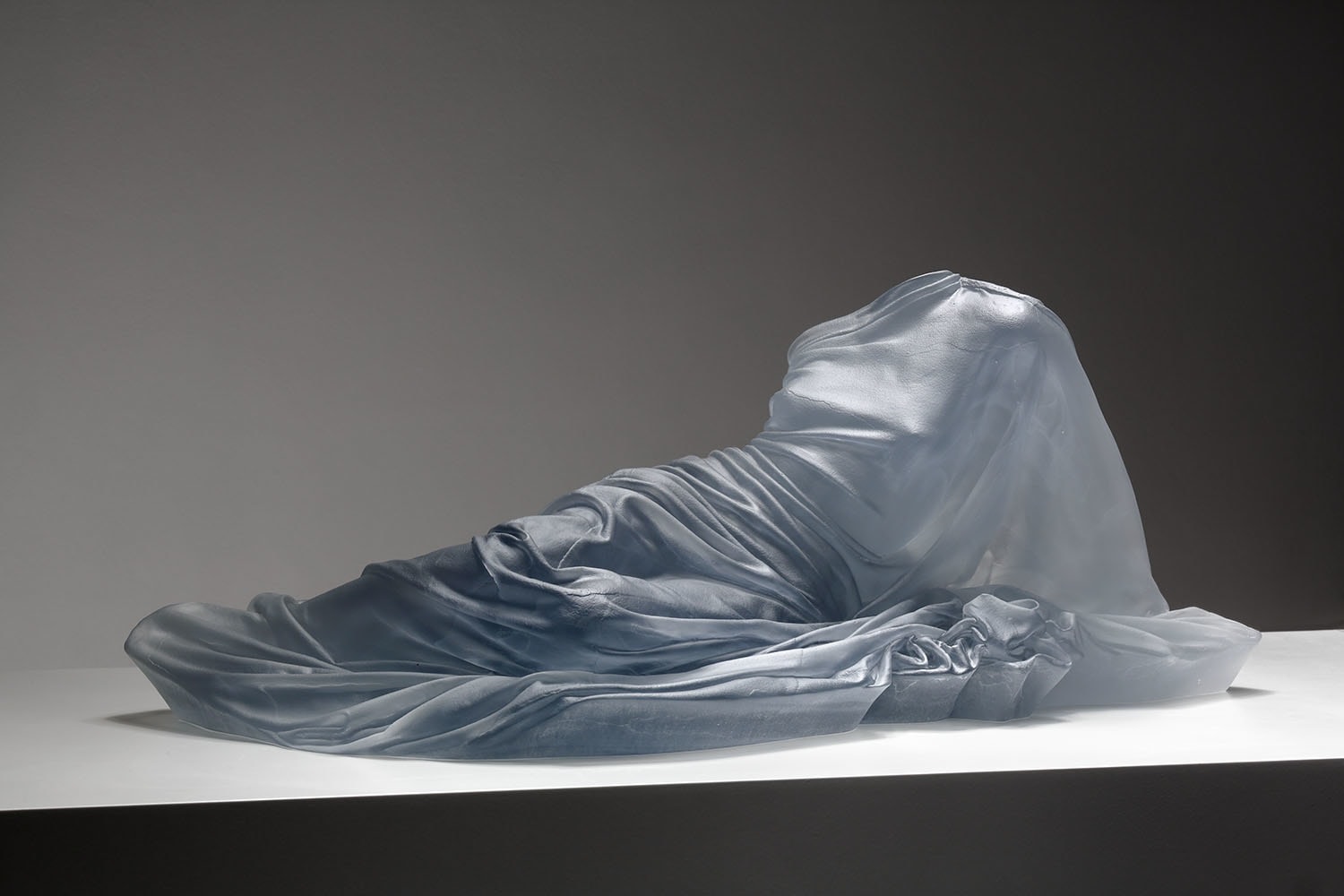Nocturnes
Karen LaMonte’s work focuses on the idea of beauty. She observes that beauty is not in the eye of the beholder, but is a specific cultural expression equated with truth, goodness, and morality. It is the subject of philosophical musings from Plato and Nietzsche, as well as those by modern writers including art critics Arthur Danto and David Hickey. In its embrace or abnegation, the notion of beauty informs all art and architecture, attraction and evolution.
Inspired by the beauty of night, LaMonte calls her sculptures “Nocturnes”: dark, seductive, and sublime. They are absent female forms rising from penumbral garments as figurations of dusk.
With twilight as her muse, LaMonte builds on the legacy of night meditations from Whistler, John Field, and Frederick Chopin. Her artworks explore the transition from known to unknown, from conscious to unconscious, from reality to dream, and from material to immaterial.
Night is transcendent, transfiguring the personal into the universal. When the veil of daylight recedes, the darkness of night opens the infinite space of the universe that surrounds us. Night seduces with a romantic, limitless, and unobtainable beauty. These sculptures explore evening’s sublime splendor, the mysterious side of feminine beauty
Material
Sculpting with drapery, LaMonte gathers darkness around the body using lightly tinted crystal. She envisions her technique as “drawing with dusk,” a sculptural interpretation of Tenebrism. It took over two-and-a-half years of experimentation for her to achieve the right color and density of the glass.
Her Nocturnes in white bronze glisten like moonlight on the body. These sculptures glow like stars. Like celestial bodies, together they become constellations.
Rendered in rusted iron, the Nocturnes are locked into a process of transformation and imperceptible decay, like waning daylight. They embody transition as does twilight, positioned between day and night.




